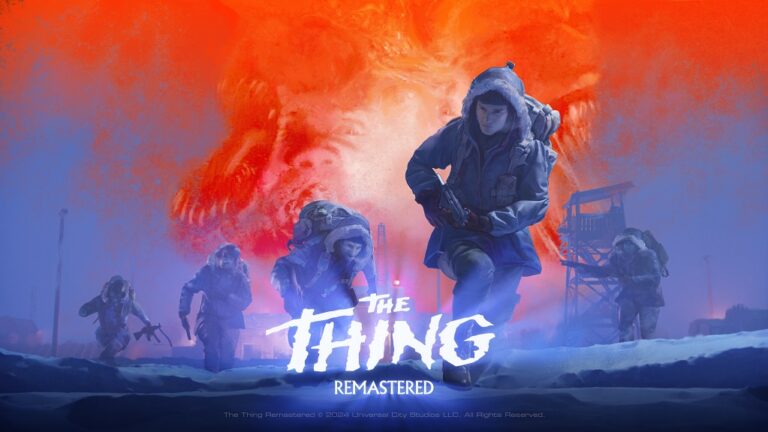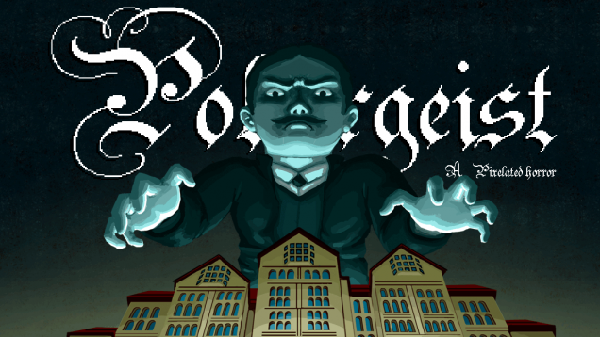
In most horror games, we are the ones who have to face off against the monsters. Throughout our games they haunt us with ghostly visions, chilling noises and other tricks that keep us on the edge of our chairs, even if the monsters themselves are not around. Poltergeist: A Pixelated Horror turns this concept around and has players take control of a ghost who has to scare people until they break.
The ghost in question belongs to a man named Henry B. Knight, who in his lifetime bought a plot of land and constructed his own mansion. Sadly, his wife died soon after and Henry became more and more distant; he refused to leave the house and chased away anybody who dared to come close to it. When he passed away himself, other people had the audacity to move in, angering the lingering spirit of Henry. In each mission, players have to help Henry haunt the new tenants until they flee from his house in blind terror.
Each level is essentially a puzzle that presents you with a set of rooms that are populated with a few characters. At the bottom of the screen there is a bar with spells you can use, such as shaking an item around, making creepy noises, or possessing a human being. There are a set amount of these abilities in each mission and each character has an indicator above their head that shows how close they are to fleeing; some characters only have one strike before they go running, while others can have as many as three. If you manage to empty the floor before running out of spells than the mission succeeds.
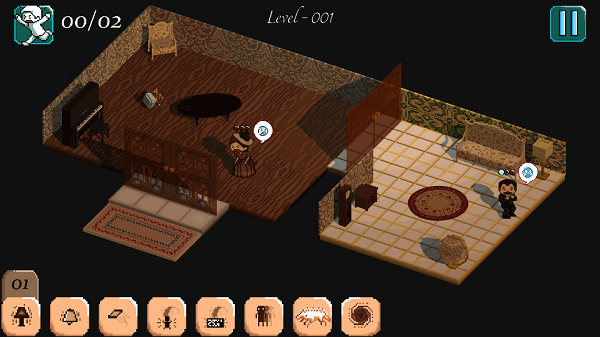
The key to winning is knowing how all the skills work and how best to use it to your advantage. A simple spell like the one that throws an item is kind of basic: it scares everyone in the room with the item in it once and everybody in the room the item lands in is also scared a single time. Each spell after that becomes increasingly more complicated, but the game does a great job at steadily introducing new additions by putting you through some easy levels whenever they are added.
To complicate matters even further, the game contains a number of special characters that are trained in combating ghosts. People like witches, ghost hunters and priests will become more common later on and each one of these will be able to counter a maximum of two abilities. They can (and must) still be scared into running away, but you will have to make sure not to use spells these enemies can counter in the rooms they are occupying, meaning they must be lured with certain abilities, like making noises, that give them a reason to move to another room. This is where the game can be a bit annoying, as using these noises is finite as well and there is no set order in which characters react to them. You might have to restart a mission a few times because of this, since it’s completely out of your control until you unlock the upgraded version in the last few levels.
Each chapter has fifteen missions and tackles a certain theme; it starts off in the classical era, but then moves forward to a different time, which also changes the way the mansion looks and what kind of people occupy it. The final three missions of a chapter are always dedicated to a boss-fight, which are the only people with unique character designs and stories that explain who they are. These bosses will counter all your available spells, so instead of targeting them, you must clear out all the other tenants while avoiding the boss and the tools they utilize. While not terribly interesting from a story perspective, these boss-fights did always feel like suiting conclusions to a chapter.
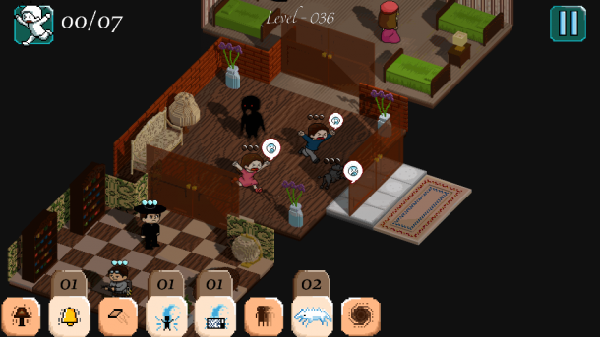
While all puzzles are linearly numbered, you only have to do a set amount before the next chapter is unlocked, meaning some can be skipped. This was a useful feature for me, as there are no hints in the missions and three of them had me really stuck. Even parts of the boss-fights can be freely skipped if you want and it won’t impact your ability to get the regular ending. For the completionists out there, there is a final chapter after the first ending that does require you to finish everything before it, so there is definitely a reward for the veteran puzzler, but the game doesn’t punish the amateur too much either.
The challenge does ramp up rather well, so you aren’t stuck with the basics for too long. While it’s easy to breeze through the first chapter without much thought, before long the puzzles will reach a nice point where they are challenging, but rarely go too far with it. The fact I sometimes had charges left on my abilities also made me realize there must have been multiple way to achieve the goal, which is a nice thought. It can be annoying, however, when the game arbitrarily limits what objects can be used; it’s clear this is an attempt to give you less resources and make the puzzle harder, but it makes little sense and ends up becoming a game of memorization. I would have preferred if they didn’t take a middle ground and instead chose to either have less objects in the levels or not limit what I can use.
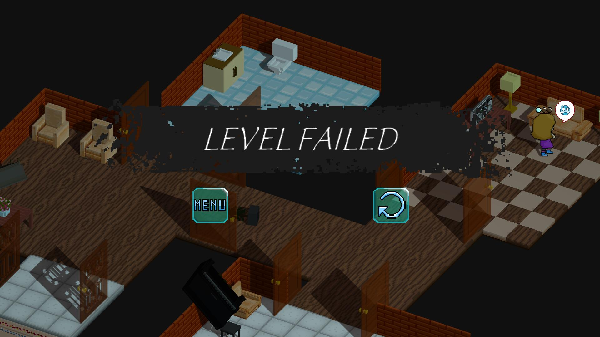
The game was produced by a Colombian studio known as “Glitchy Pixel” and this is their first commercial game, so I am impressed with the quality of the art. After starting the game I did have to delve into the options menu to fix the resolution and other settings because the 3D effect on the title screen was giving me headaches, but everything after that is simple and appealing to look at. I especially love the scared expression on the faces of the tenants as they flee the house with arms flailing – it’s a cute sight that never got old. There is also a nice amount of animations that helps convey the state of each character; if they are distracted, for example, they will be occupying an item like a TV or chair that you could otherwise use to frighten other tenants, and it was always immediately obvious if this was the case. It would be nice to have some more random tenants just for the sake of variety, but considering this is an $8 indie title, I am left pleasantly surprised.
Though the art is cute, I would sooner recommend the game to older gamers looking for something light-hearted, as the difficulty might be a little too high for the youngsters. Overall, I would describe the game as a well-designed puzzle title that stands out well due to its theme and mechanics. It won’t blow you way, but it will definitely entertain for a few hours.
 (7.5 / 10)
(7.5 / 10)
Good
 (7.5 / 10)
(7.5 / 10)

